When and how to dig up daffodils after flowering?

At each summer cottage, you can see graceful heads of fragrant flowers in white, yellow, pink, orange in the spring. Against the backdrop of bare black earth, these flowers look fantastically beautiful. This daffodil is an early flowering plant of the amaryllis family. Digging up the bulbs is one of the main ingredients in caring for this gorgeous flower.
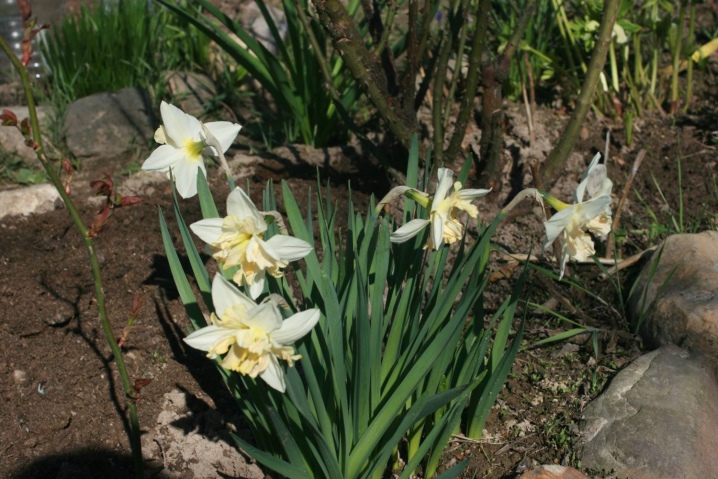
Peculiarities
Many centuries ago, the daffodil was a symbol of beauty. People appreciated the graceful slenderness of the silhouette of the daffodil and its unique charm. Currently, there are about 30 thousand varieties of this plant.
Early varieties bloom in April, late ones - in early summer. The narcissus bulb is perennial, in contrast to its neighbor in the flowerbed - the tulip. Within 4 years, it grows, increases in size, respectively, the flower itself grows stronger and from year to year it becomes larger and larger.

Therefore, it is not worth digging and replanting daffodils without special need every year. If this is done, then the flowers will be crushed and weakened.
You can dig them up prematurely under such circumstances:
- if you need to increase the number of bushes;
- if you notice signs of disease on your plants;
- if the daffodils began to bloom in very small flowers due to the special crowding (some varieties of daffodils form up to 6 daughter bulbs per season).
But it should be borne in mind that some varieties of daffodils after transplanting may experience such stress that they will not bloom for two years, "offended" by you.
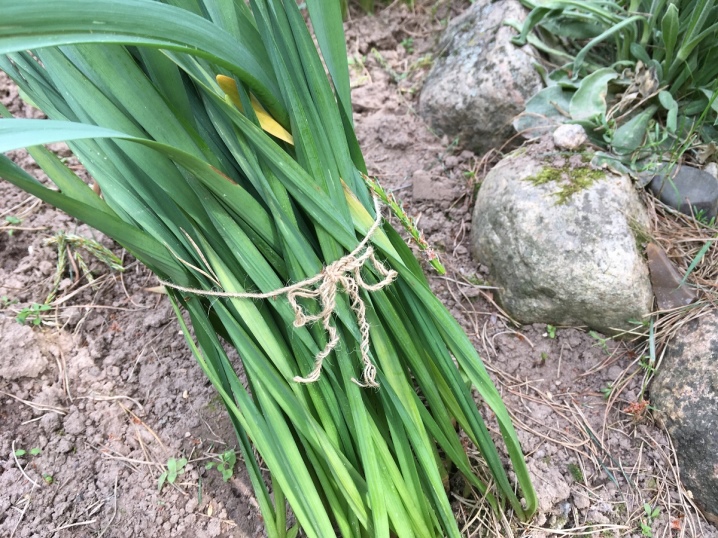
Well, if your plants are healthy, bloom well, the plantings are not thickened and you do not need to multiply them urgently, do not touch them for 4-5 years. The fact is that over the years, daffodils have given so many children that they become very cramped, there is not enough food, there is no free space for growth and development; the plants stop blooming. To create more comfortable living conditions for daffodils, they still need to be seated.

Signs that the bulbs are ready
So, 5 years have passed since the acquisition and first planting of daffodils, and you decided to transplant them. The time to dig up the bulbs depends on the climatic conditions in which you live, as well as on the variety of daffodils. It is clear that early flowering species will need to be dug up earlier than late flowering... In the southern regions, where the climate is dry and hot, you can start digging up daffodils as early as the end of June. In the middle lane - in mid-July. In the northern regions - not earlier than the beginning of August.
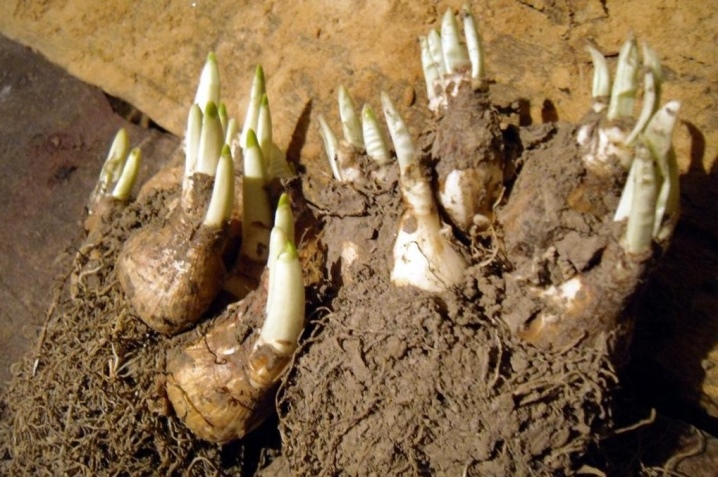
When the favorites of your garden have finished pleasing you with their flowering, cut off the seed pods that have tied up with them so that all the vitality of the flower does not go to the formation of seeds.
Well, then please be patient and wait for the leaves to completely lodge, because the daffodils that have lost their decorative effect may spoil the appearance of your flower bed.
Disguise them with flowering or decorative annuals.
Do not cut off withered or yellowed leaves of daffodils and flower stalks, since with the help of them the bulb receives a supply of nutrients, which is needed for setting buds. From withered leaves, you can make a "hairstyle" for daffodils, for example, braid them in pigtails. This will make your flower bed unique.
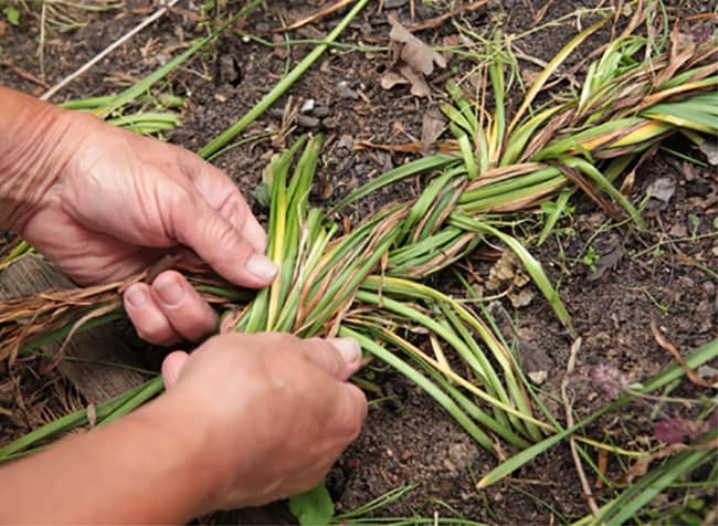
Feeding your plants immediately after flowering will help the bulb grow stronger, stronger and develop healthy flower buds. Once the leaves are completely dry, you can start digging up the daffodils. Most often this time is the middle of summer. If the weather is hot and dry, you can dig the bulbs already in mid-June. And if the summer turned out to be cool and rainy, then the time for digging up for transplanting can stretch until the end of July, provided that your flowers grow in open ground.

Try not to be late with digging up daffodils for two simple reasons. The first - young tender roots will begin to grow at the bulbs and, digging up, you can damage them. The second reason is that the withering and drying foliage will sooner or later completely separate from the bulbs and it will be very problematic to find them in the soil (provided that your flowers are not planted in special baskets for bulbs).
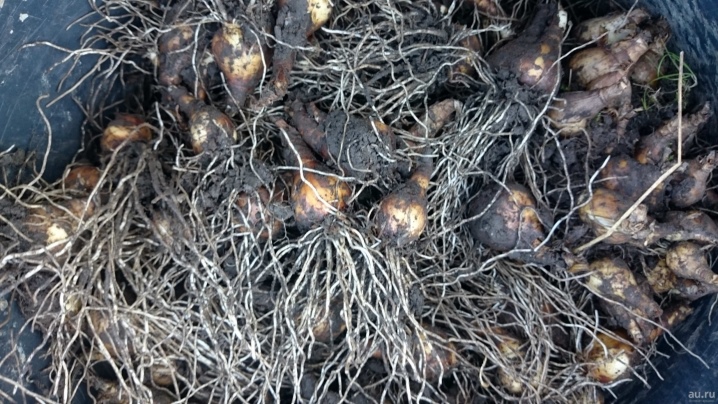
Step-by-step instruction
To prevent the bulbs from being damaged during the digging process, certain instructions must be followed.
- The process of digging up daffodils should be done exclusively in dry weather.
- Carefully use a garden trowel or pitchfork to dig up the bulbs, taking care not to damage them. Dig up plants with some soil reserve so as not to injure even small roots.
- It is necessary to choose from the soil not only large, but also the smallest bulbs. Be sure to carefully check if there are any plants left in the ground. Immediately discard diseased, sluggish bulbs, discard them without regret, as they can infect healthy plants.
- It is necessary to cut off not completely dried leaves. It is not necessary to wash the bulbs, although some growers practice it. In no case should you knock onions together to clear them of the ground. Only the easily removable soil layer can be removed by hand. You do not need to cut the roots.
- You can dry them by spreading them out in one layer in a place protected from the sun in order to avoid the formation of burns. Drying time should take no more than 3 weeks. At the same time, it is necessary to protect the bulbs of the daffodils from the invasion of the daffodil fly, from the larvae of which it will be very difficult to get rid of.
- Next, you need to shake off the remaining soil from the bulbs, being careful not to damage them. Carefully remove the dry upper scales, in no case exposing the bulb to white scales. Now you can cut dry roots.
- Then we separate the children. Rounded daughter bulbs, as a rule, easily lag behind the mother plant, and flat ones are separated with some effort. It is not necessary to break them out by force. If, nevertheless, the integrity of the bulb has been violated, powder the wound with ash to avoid decay. The smallest daughter bulbs should not be thrown away. Store them separately from large ones. Subsequently, you will need to plant them separately and grow them for several years until they bloom.
- Sort large bulbs from small ones. Bulb calibration is optional, but it will make it much easier for you to plant the plants later, as bulbs of different sizes will need to be planted at different depths.
- Arrange them according to varietal characteristics (color, shape, flowering time). If you have many different types of daffodils, make tags or placards so you don't forget where you store which variety.
- Mercilessly cut out the damaged and sore spots with a disinfected sharp knife, then sprinkle the cuts with crushed coal or ash to form a protective crust.
- Disinfect the bulbs. To do this, keep them in a weak solution of potassium permanganate for 20-30 minutes or in a 0.2% solution of foundationol.
- Spread them out again to dry for a few days, providing protection from the sun and onion parasites.
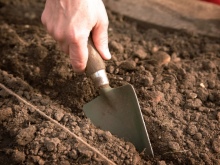


After such simple manipulations, the daffodil bulbs can be safely removed for storage.
Storage tips
Store daffodil bulbs in dry, cool places, for example, in a barn, basement, dry cellar. The storage temperature should be about 20 degrees Celsius, without sudden changes. Do not try to store the daffodil bulbs in the refrigerator until planting in the fall, although at first glance, the conditions are suitable there: cool and dark.The air humidity in the refrigerator is so high that daffodils will quickly sprout and become unsuitable for planting outdoors.
Each bulb must be provided with air access, so you need to decompose them in one layer. If there is a lot of planting material, then you can arrange the bulbs in two layers, laying a layer of newspaper or paper between them. You do not need to do more layers, as this will complicate further work with the planting material.
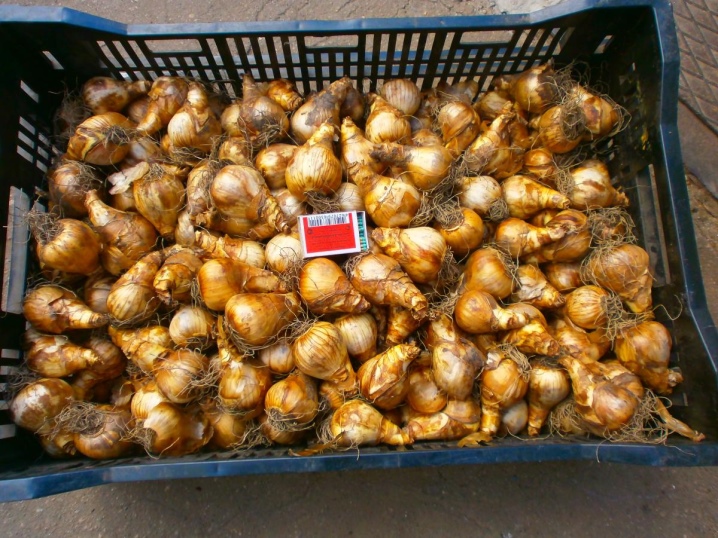
Cardboard boxes or wooden crates are best for storing bulbs. Never use cellophane bags, plastic, plastic or glass containers. The bulbs that you nursed so carefully can simply rot.
Next, periodically review your planting material. Go through each onion, examine it from all sides. If you find diseased or rotting bulbs, throw them away, otherwise they can infect healthy plants.
Storage moisture should be approximately 70%. It is important to ensure that it is not very high or extremely low. If the air in the room where the bulbs are stored is very dry, occasionally spray water around the planting material. Ventilate the room periodically if it is not equipped with automatic ventilation, as the bulbs release a small amount of gas during storage.
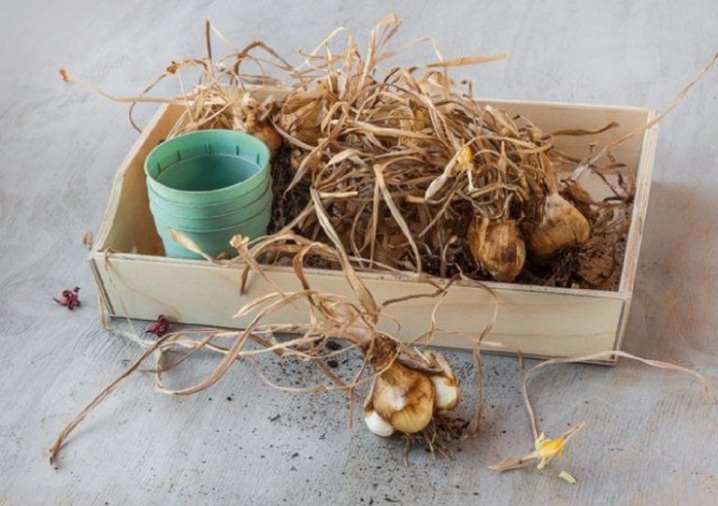
And if it stagnates, the daffodils will start to rot.
Dug out daffodil bulbs actively continue their life: they grow, breathe, and form flower buds. Thus, they need to be stored until planting in the fall for no more than three months.
The optimal planting time is late August and early September. Planting them too early is not recommended, as the plant will start to grow and will not survive the winter well. Later, it is also not necessary, because the daffodils will not have time to form roots, and the unrooted plants will die.
When planting daffodils, choose a spot in your garden where water will not stagnate in spring during floods and in summer during rains.

In other words, it should not be low, since even if there is drainage, the bulbs can die from a large amount of moisture.
If you want daffodils to delight you with their flowering as long as possible, plant them under trees in shady places. There, their color will appear in all its glory, will not fade from the bright spring sun and they will bloom for a very long time.
Prepare the holes, the depth of each of them should be equal to three times the height of the onion. That is, if the height of the bulb from the bottom to the crown is 5 centimeters, then the hole must be dug 15 centimeters deep. Now you need to pour some sand on the bottom to ensure drainage, then cover with fertilized soil.
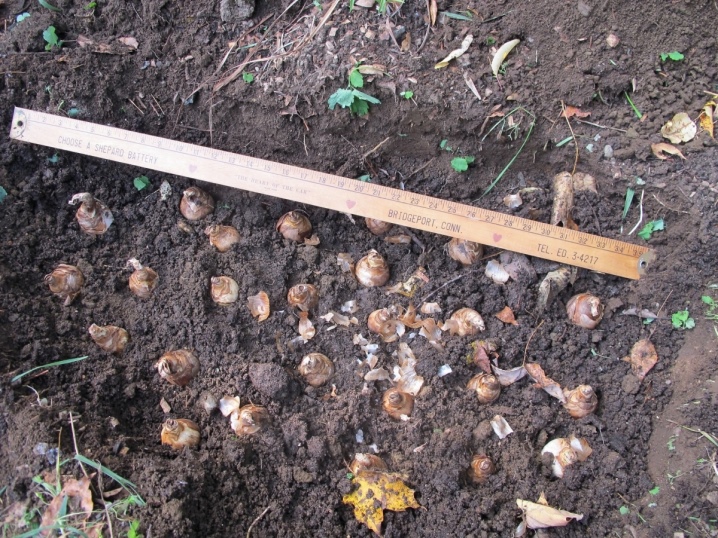
For the winter, you can cover a flower bed with daffodils with foliage or dry grass.
Observing the rules outlined in this article, you can every year admire amazing daffodils from early spring to early summer and enjoy not only contemplation, but also from the very process of caring for your bulbous pets.
For information on when and how to dig up daffodils, see below.






































































































The comment was sent successfully.